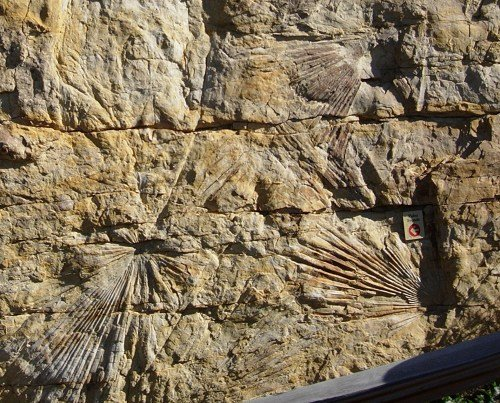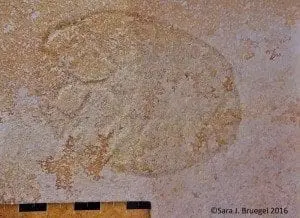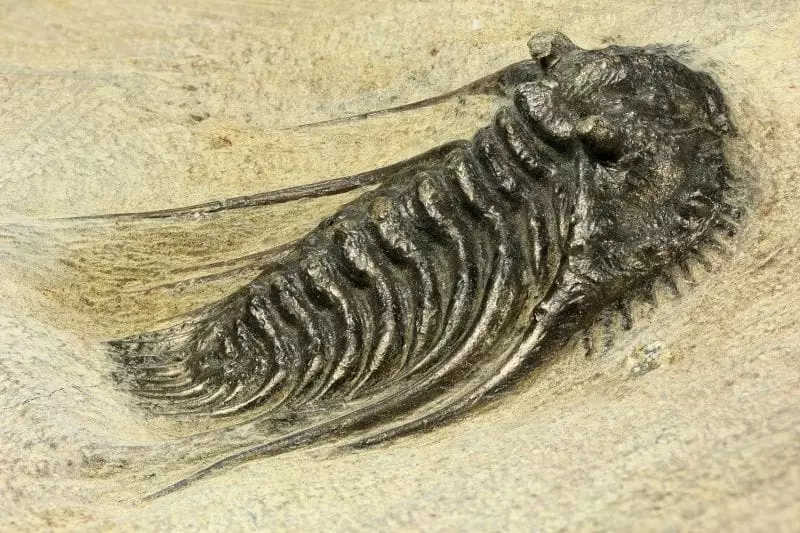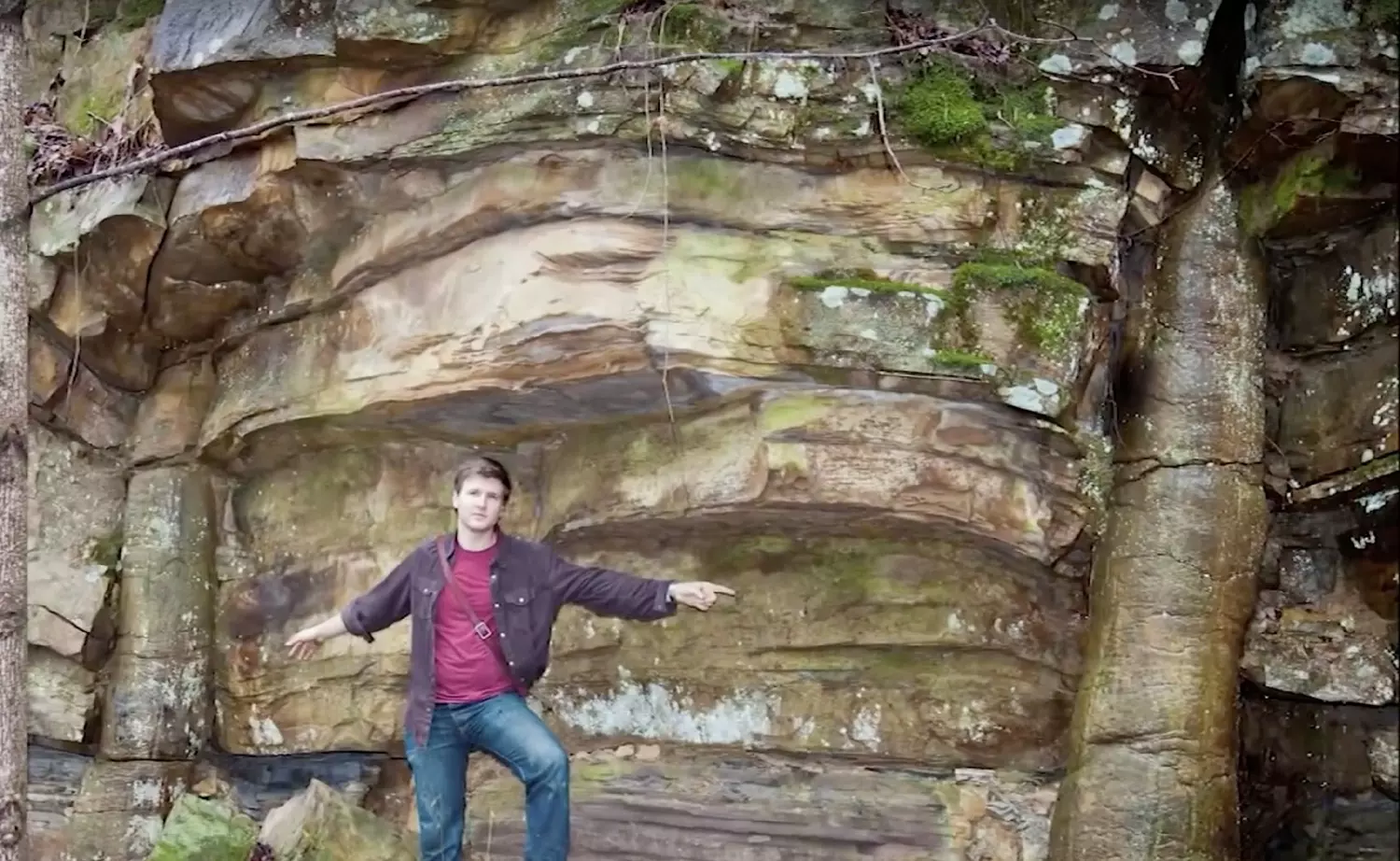[Originally published as RSR’s List of the Kinds of Polystrate Fossils]
Many have heard about polystrate tree fossils: the many, many tree trunks found standing upright through multiple rock layers, some of which that were allegedly deposited over hundreds of thousands or even millions of years. Typically these fossilized trees, which they claim to ages to be buried, show no greater erosion at the top than the base.
Old-Earth Explanations of Polystrates
Arguments given by those who claim the earth is billions of years old include:
- these particular layers were not deposited over the long periods implied
- regardless of how long it took for sediments to bury it, of course the tree stood that long
- the fossilized tree was later implanted vertically through the rock layers; or, there are almost no actual polystrate fossils and this phenomenon is just exaggerated by young earth believers
to explain a single polystrate that they are looking at (as compared to the millions of polystrate fossils in existence) typically come nowhere near to being even remotely plausible for a single polystrate, let alone all the many kinds of polystrates and all the millions of instances of their fossilization.
Kinds of Polystrate Fossils:
But upright fossilized trees form only one kind of polystrate fossil. The other kinds include:
- polystrate schools of jellyfish
- three-dimensional trilobites in limestone
- delicate radiating spine polystrates
- 171 (awfully persistent dead) tadpoles in diatoms
- fossilized end-to-end leaves standing on their sides
- a fossilized whale buried in diatoms
- a fossilized school of whales buried across four strata
- etc. (every fossil that crosses strata boundaries)

Now how about those LEAVES! Leaves? Yes, leaves! There are two leaves, buried vertically, as though standing on edge for thousands of years, while buried by the super-slow deposition of diatomaceous rock! Ha! Leaves.
And there’s a mesosaur (and countless other 3D fossils; 3D, in other words, not flatten like a piece of paper, but having significant thickness), a mesosaur buried in multiple “varve” layers, which are claimed to be annual depositions, yet these fossils typically show no erosional patterns that would indicate gradual burial.
Then there’s that whale skeleton in a California quarry, uplifted, with its rib cage and other bones buried by diatoms, again, which diatomaceous earth is said to be deposited incredibly slowly!
And speaking of whales, how about the 40 whales! buried in Chile (and several hundred more, undiscovered)! Looks like a mass stranding. But these whale fossils surprised a Smithsonian evolutionist, Dr. Nick Pyenson. Why? Because, he says: “It happened four times.” Why’s that? Because “the fossil site has at least four layers”, to which Real Science Radio’s Bob Enyart replies: “Ha ha ha ha ha ha ha ha ha ha ha”, with RSR co-host Fred Williams thoughtfully adding, “Ha ha!”
Polystrates like Spines and Rare Schools of Fossilized Jellyfish:

Previously, seven sedimentary layers in Wisconsin had been described as taking a million years to form. And because jellyfish have no skeleton, as Charles Darwin pointed out, it is rare to find them among fossils. But now, reported in the journal Geology, a school of jellyfish fossils have been found throughout those same seven layers. So, polystrate fossils that condense the time of strata deposition from eons to hours or months, include:
- Jellyfish in central Wisconsin were not deposited and fossilized over a million years but during a single event quick enough to trap a whole school. (This fossil school, therefore, taken as a unit forms a polystrate fossil.) Examples are everywhere that falsify the claims of strata deposition over millions of years.
- Countless trilobites buried in astounding three dimensionality around the world are meticulously recovered from limestone, much of which is claimed to have been deposited very slowly. Contrariwise, because these specimens were buried rapidly in quickly laid down sediments, they show no evidence of greater erosion on their upper parts as compared to their lower parts.
- The delicacy of radiating spine polystrates, like tadpole and jellyfish fossils, especially clearly demonstrate the rapidity of such strata deposition.
- A second school of jellyfish, even though they rarely fossilized, exists in another locale with jellyfish fossils in multiple layers, in Australia’s Brockman Iron Formation, constraining there too the rate of strata deposition. By the way, jellyfish are an example of evolution’s big squeeze. Like galaxies evolving too quickly, galaxy clusters, and even human feet (which, like Mummy DNA, challenge the Out of Africa paradigm), jellyfish have gotten into the act squeezing evolution’s timeline, here by 200 million years when they were found in strata allegedly a half-a-billion years old. Other examples, ironically referred to as Medusoid Problematica, are even found in pre-Cambrian strata.
- 171 tadpoles of the same species buried in diatoms.
- Leaves buried vertically through single-celled diatoms powerfully refute the claimed super-slow deposition of diatomaceous rock.
- Many fossils, including a Mesosaur, have been buried in multiple “varve” layers, which are claimed to be annual depositions, yet they show no erosional patterns that would indicate gradual burial.
- A single whale skeleton preserved in California in dozens of layers of diatom deposits thus forming a polystrate fossil.
- 40 whales buried in the desert in Chile. “What’s really interesting is that this didn’t just happen once,” said Smithsonian evolutionist Dr. Nick Pyenson. It happened four times.” Why’s that? Because “the fossil site has at least four layers”, to which Real Science Radio’s Bob Enyart replies: “Ha ha ha ha ha ha ha ha ha ha ha”, with RSR co-host Fred Williams thoughtfully adding, “Ha ha!”
Polystrate Trees
Examples abound around the world of polystrate trees:
- Yellowstone’s petrified polystrate forest (with the NPS exhibit sign removed; see below) with successive layers of rootless trees demonstrating the rapid deposition of fifty layers of strata.
- A similarly formed polystrate fossil forest in France demonstrating the rapid deposition of a dozen strata.
- In a thousand locations including famously the Fossil Cliffs of Joggins, Nova Scotia, polystrate fossils such as trees span many strata.
- These trees lack erosion: Not only should such fossils, generally speaking, not even exist, but polystrates including trees typically show no evidence of erosion increasing with height.
All of this powerfully disproves the claim that the layers were deposited slowly over thousands or millions of years. In the experience of your RSR radio hosts, evolutionists commonly respond to this hard evidence with mocking. See CRSQ June 2006, ICR Impact #316, and RSR 8-11-06 at KGOV.com.
Example of Limestone Encased Trilobites
 Like countless trilobites around the world, this was buried in limestone, much of which is said to be deposited very slowly.
Like countless trilobites around the world, this was buried in limestone, much of which is said to be deposited very slowly.
Yet thousands of trilobites from countless locations are buried three-dimensionally. After having viewed perhaps thousands of trilobites from museum collections, private collections, fossil stores, and over the Internet, it appears that there is no evidence of greater erosion of their upper parts as compared to their lower parts. These creatures, regardless of how many layers of fine particles cover their bodies, were buried in a single depositional event, and not gradually. (See RememberTheNautiloids.com for another enormously widespread example of this observation.)
Example Polystrate Fossil (this one of a Mesosaur)
You can see an example of a polystrate marine fossil in the collection of the Creation Guy John Mackay (2nd photo down). Fossils like this one, buried in multiple “varve” layers, which are claimed to be annual depositions, show no erosional patterns that would indicate a gradual burial.






